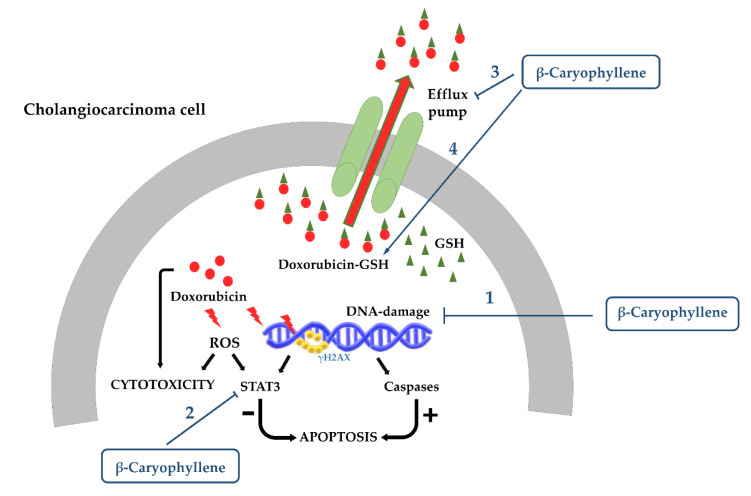Figure 8.
Possible mechanisms involved in the chemosensitizing effects of β-caryophyllene [163]. Doxorubicin increases reactive oxygen species (ROS) and γH2AX levels, thus leading to S-phase cell cycle arrest and activation of STAT3 as chemoresistance responses; moreover, the drug can be conjugated with glutathione (GSH) and extruded by the efflux pumps. When doxorubicin is administered in combination with β-caryophyllene, the sesquiterpene stimulates cell cycle checkpoints (both G0/G1 and G2/M phases), partly lowers DNA damage (1), and inhibits the STAT3 activation (2), thus increasing the apoptosis rate. Moreover, it can block the efflux pumps (3), thus allowing the intracellular accumulation of doxorubicin–GSH conjugates (4), which in turn lead to cytotoxic and pro-aptotic effects.

